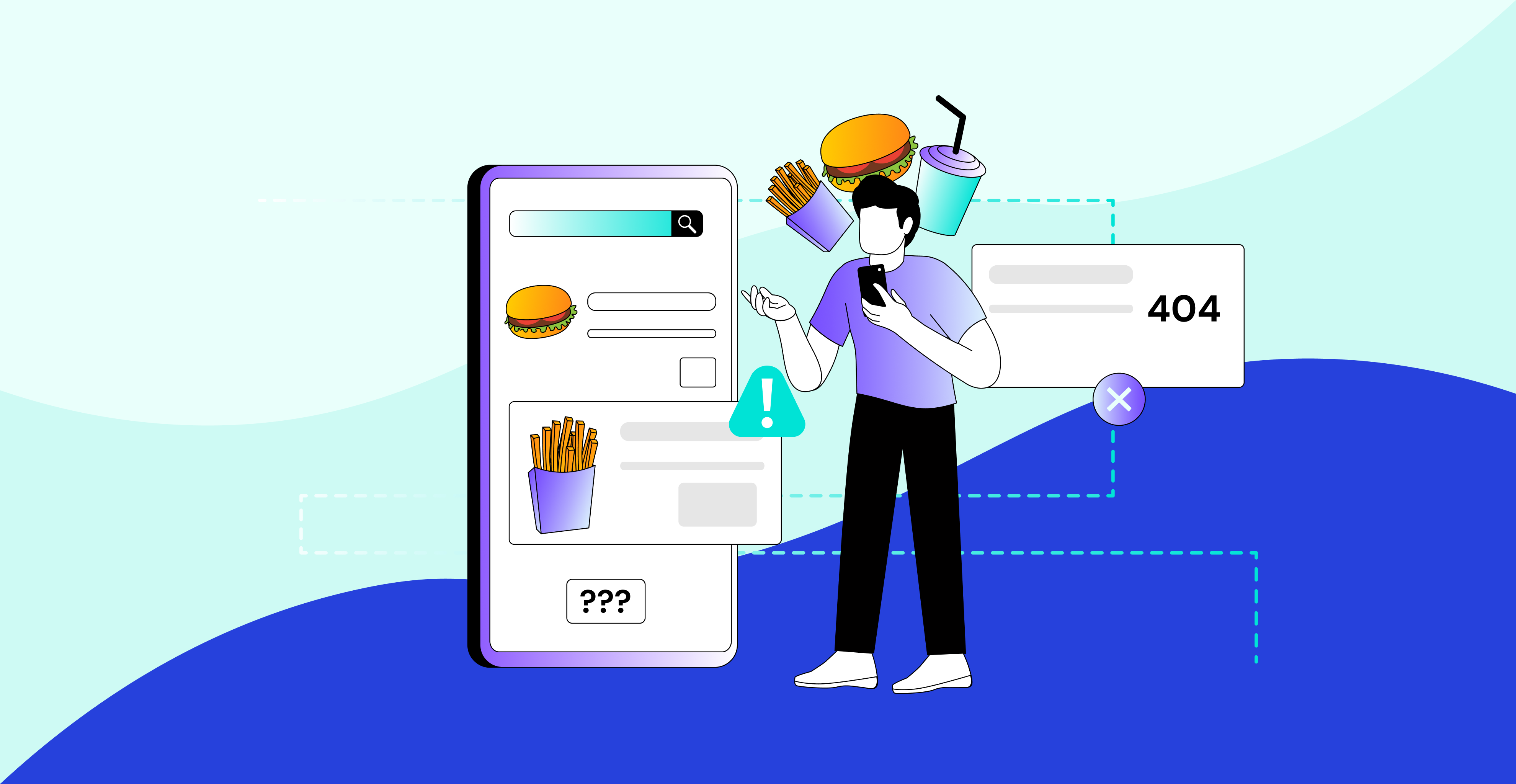Lost in Menu, Send Fries: One Man’s Mission to Order Food on an Inaccessible App

Ordering food online should be simple. A few taps, a quick confirmation, and dinner is on the way. For sighted users, that’s often true. For screen-reader or other assistive technology users, the process can quickly turn into a maze of unlabeled buttons, misfiled menu items, and checkout dead ends. What should take five minutes can stretch into hours of trial, error, and accidental milkshakes. The following story captures my evening’s battle with a delivery app, when all I wanted was fries. So step into my shoes and join me on my mission.
6:41 pm
The craving hits. Fries. Crispy, salty, golden fries. I open the delivery app, ready for battle. The first thing it asks me is, ‘What are you craving? ’ A bold question for a Tuesday evening. If I had that kind of clarity, I wouldn’t need this app.
6:49 pm
Favourite categories appear: Burgers, Chicken, Salads, Family Favourites… Fries missing. Apparently, fries aren’t a favourite anymore. Maybe they’re in hiding.
6:55 pm
VoiceOver decides to narrate every decorative emoji in the menu. “Burger, burger emoji, Fries, fries emoji, Chicken, chicken emoji. It feels like listening to someone describe stickers out loud.
7:02 pm
Found fries hiding under value extras. Because clearly, they’re not valuable enough to be visible. I try to add them to the cart. Tap, silence. Tap again, silence. Third tap: it suddenly adds four orders. Great. I look like I’m feeding a marching band.
7:12 pm
While fixing the cart, I somehow added a milkshake. I don’t even know which flavour. It just says ‘shake’. That’s less of a menu option and more of a gamble.
7:19 pm
Attempting checkout. There’s a button that VoiceOver announces as ‘Possible Submit’. ‘Possible’? Like the app itself isn’t sure what it does. My stomach doesn’t run on possibilities.
7:26 pm
Error. Something went wrong. Please try again later. Later, like I’m booking concert tickets. I’m ordering fries, not season passes.
7:34 pm
Back at the main menu. Of course, all my cart items are gone. It’s like climbing a mountain only to fall back to base camp because the app sneezed.
7:42 pm
This time, I try a different path. I use the popular tab. Fries aren’t listed. Chicken sandwich is number one. Fries didn’t even make the podium.
7:49 pm
Add fries again. Accidentally double-tap and add a Caesar salad. A Caesar salad. What part of my energy screams leafy greens right now?
7:55 pm
Checkout again. Spinning wheel. It spins. And spins. And spins. I’ve seen small-town roadwork wrap up faster than this.
8:02 pm
Finally, the confirmation screen. Order placed. Delivery ETA 58 minutes. 58! That’s basically tomorrow.
8:09 pm
I picture the driver wandering around with my fries like they’re on a sightseeing tour. My stomach growls so loud it scares the cat.
8:17 pm
Still waiting. The app shows my order as being ‘prepared’. I imagine one lone fry cook peeling the potato in slow motion like it’s performance art.
8:33 pm
A notification pops up. Your driver is on the way. Victory. The fries are real, and they’re coming home.
8:47 pm
I get a text. ‘The driver cannot find your address’. Of course. Technology can send me in circles inside a menu, but can’t find the porch light on my building.
8:59 pm
At last, a knock at the door. The bag arrives like a long-lost package. The fries are still warm, the milkshake is real, and the Caesar salad is glaring at me like, ‘you didn’t want me, but here I am.’
9:03 pm
I eat. Victory tastes… salty.
2 hours and 22 minutes later
This whole ordeal might sound funny on the surface, but the frustration is real. Each misstep, whether it’s fries buried in ‘value extras’, unlabeled buttons, or checkout screens that vanish, adds time, stress, and uncertainty.
For someone relying on a screen reader, these aren’t small bumps. They’re full resets that can make you want to abandon the order altogether. And that’s why it matters. Accessibility isn’t about convenience. It’s about dignity and independence. When an app is built with clear labels, consistent navigation, and menus that make sense, it saves more than minutes; it restores confidence. Good design keeps people from giving up on dinner. Bad design turns a simple craving into an obstacle course.
Ordering food should feel human, not exhausting. The difference between frustration and simplicity isn’t complicated; it’s in the details. And those details are what make technology work for everyone.

Kita Fortner
Kita is a blind accessibility advocate and front-end developer who brings lived experience to his writing. He uses screen readers, braille, and assistive technology daily, giving him a sharp perspective on the barriers many websites still create. His work focuses on making the digital world more usable for people who are blind, with honest insights drawn from both coding and navigating the web himself. Connect with him on LinkedIn.